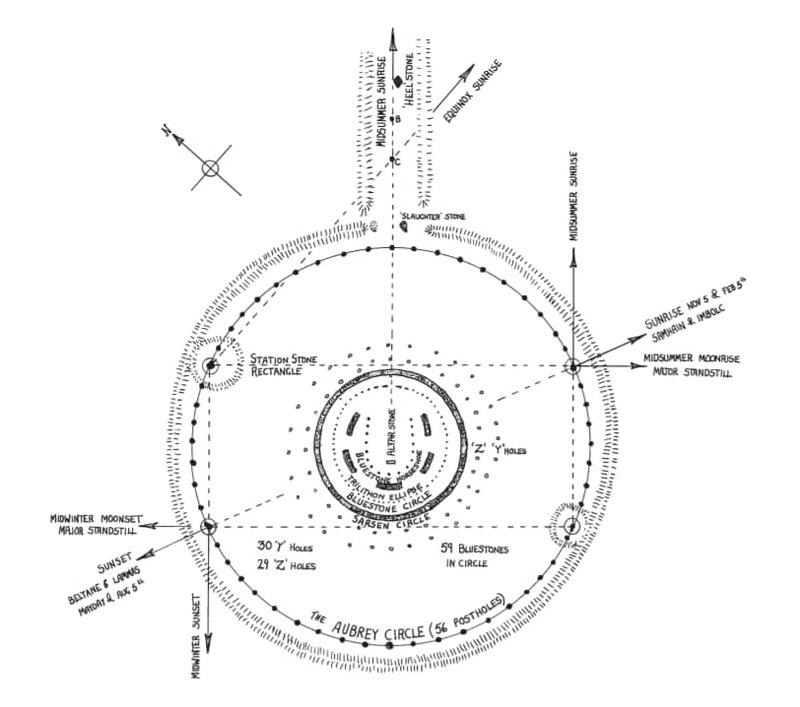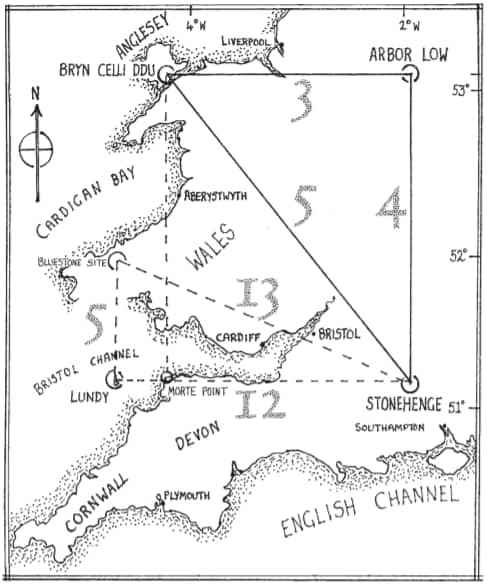 Not only Stonehenge, but also other megalithic structures were created by the ancient inhabitants of the British Isles with an understanding of the basics of geometry.
Not only Stonehenge, but also other megalithic structures were created by the ancient inhabitants of the British Isles with an understanding of the basics of geometry.The theorem, which is referred to in the title, was taught in school by all. Even the most careless students have heard the name of Pythagoras and understand the essence of the theorem. The statement that the sum of squares of the lengths of the legs in a right triangle is equal to the square of the length of the hypotenuse is not really too difficult to understand. It is believed that for the first time the theorem was formulated by an ancient Greek philosopher and mathematician who lived on the island of Samos in the 6th-5th centuries BC.
But it
may well
be that the inhabitants of the British Isles used the same theorem long before Pythagoras. They lived 2000 years before the birth of the philosopher and mathematician, so there was no one to tell them about geometry - all calculations were carried out on their own. Most likely, the knowledge of that time was formed empirically. This is stated in the book Megalith: Studies in Stone.
As for Stonehenge, the assumption of its use by the builders of the Pythagorean theorem did not arise from scratch. The fact is that the basis of this monument to the development of human civilization is a rectangle of four stones (sandstone). This rectangle is divided diagonally into triangles. They, in turn, have an aspect ratio of 5:12:13.
The authors of the book claim that eight lines emanate from the center of the building, from rectangles and triangles, which indicate the most important events in the Neolithic calendar. These are, for example, the points of the summer and winter solstices. Stonehenge, apparently, was not only a religious building, but also something like a calendar, which indicated the onset of various seasons of the year, cattle grazing time, etc.

One of the authors says that there is another rectangular triangle. It is formed by Stonehenge himself, the place of extraction of blue stones for the construction of buildings and the island of Landi. This statement of the authors, of course, is a bit strange - after all, it turns out that the creators of the book believe that the ancient builders consciously so calculated everything. The probability of this is not too high. A more realistic assumption is that the creators of the megalithic consciously established in its base right-angled triangles. This can tell a lot to historians about the level of civilization development of that time.
The editor of the book
believes that our ancestors were able to perform geometric calculations long before Pythagoras - and these calculations were quite complex. According to scientists, the Pythagorean theorem besides itself at various times was derived by the ancient Egyptians (XXIII century BC) and Babylonians (XVIII century BC). Moreover, the theorem was described in the encyclopedia of knowledge of ancient Chinese mathematicians, so that Ancient China was also in the know. The work is called "Mathematics in nine books", it dates from the X-II centuries BC. e.

“People often believe that our ancestors were rude cave dwellers. Nevertheless, they already knew how to perform complex astronomical calculations. We see triangles and double squares, numbers and their derivatives. We do not believe that our ancestors were mathematicians - first of all, they were astronomers and cosmologists. They studied the world around us with the help of the tools available to them - their own senses and the simplest measuring instruments. And with their help, they built Stonehenge and other megalithic structures, ”the book says.
The huge stones of Stonehenge were once surrounded by 56 wooden pillars or stones that made it possible to predict solar eclipses, because with their help it was possible to determine the positions of the Sun and the Moon, as well as evaluate the lunar phases. According to the authors of the book mentioned above, many of the knowledge of the ancestors of the inhabitants of Britain were lost with the advent of new cultures and religions, including Christianity. Anyway, there is still a lot of discoveries related to the mathematical achievements of our ancestors. Who knows, perhaps in the future, something will be found that will make it possible to understand how strong or, conversely, our predecessors were weak in mastering mathematical science.